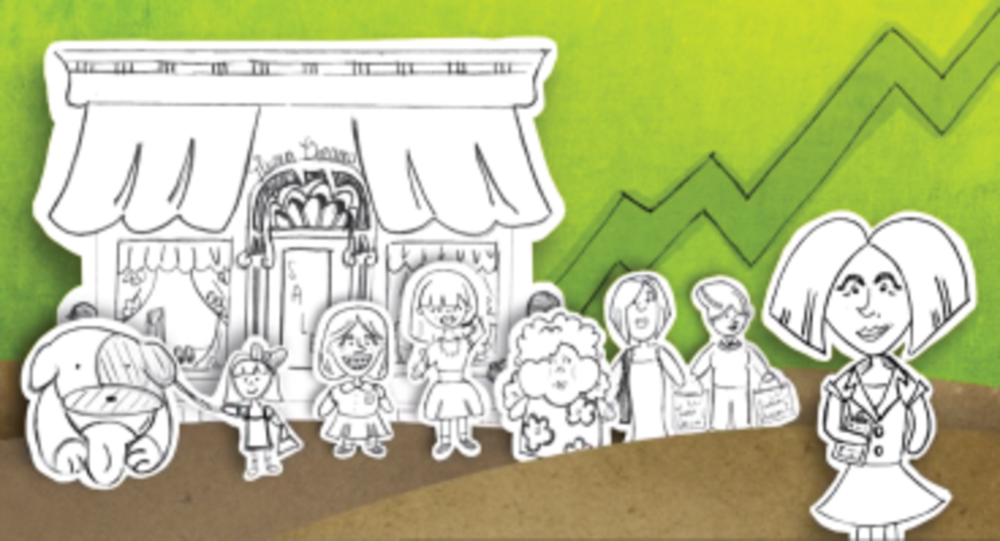Not so long ago some marketers considered personalization as simple as populating the name field in a mass email. “Personalization started with basic list segmentation years ago, which enabled marketers to better target their audience—from old-school mailings to email,” says Brian Rogers, customer success manager at Evergage, a website personalization company. But those simple days are gone. “We learned that you can improve targeting [with] behavior-based marketing automation and sending highly targeted and personalized emails.”
One company reaping the benefits of website personalization based on customer behaviors is Mindflash, a platform that allows businesses to create online training courses. Marketers at Mindflash wanted to reduce the bounce rate on the company’s blog, get more customers to participate in free trials, and help more users learn about the platform’s features. The marketing team determined that personalization was the remedy to all of those problems.
The opportunity
Mindflash was already having success driving potential customers to the company’s blog using SEO and relevant content. The hard part was getting readers to read more than one blog post and participate in free trials. “The content was appealing. However, the bounce rate was incredibly high. We never had a chance to connect with customers before they got off the site,” says Randhir Vieira, VP of product and marketing at Mindflash. “That was a problem since we know that those who create courses in free trials are more likely to convert to paying customers.”
Just 25% of free-trial users were creating online courses. Even many of the customers who created online courses weren’t aware of the product’s capabilities and new functions. “What [Mindflash] needed was a solution that could engage these inactive free-trial users and get them using the product,” Rogers says.
Mindflash set out to create a tailored experience for each visitor on the company’s website and app by using the tools from Evergage. The expectation was that doing so would help Mindflash achieve its engagement and conversion goals.
The strategy
The blog already attracted potential customers, so Mindflash determined that making individual experiences personal was crucial to building relationships with them. The first step was about providing customers with information that would educate and engage them enough to create a course using the free trial or upgrade to become a paid-subscription customer. “We built relationships by offering [users] the chance to get more content,” Vieira says. Through a prompt, Mindflash encouraged readers to enter their email addresses and subscribe to the blog. Mindflash then aims to personalize the subscriptions by delivering content tailored to each reader’s preferences, based on content he previously read on the site.
The rich content in the blog laid the groundwork for building the relationship needed to convert readers to users. The challenge was getting Mindflash app users engaged enough to create a course using the free-trial option on their mobile devices. Educating them was just one issue. The team at Mindflash noted which customers started a free trial but didn’t upload any content. After, Mindflash contacted those customers directly. The calls uncovered that some users simply didn’t have the content to create a training course or didn’t feel comfortable creating content. “So we then offered content,” Vieira says. “There’s a prompt in the app for people who don’t have content.” The prompt directs those users to free templates and courses on creating content.
Vieira adds that customers who are already using the application are sent real-time messages that alert them of new features, updates to the system, and suggestions to get more out of the platform. “When the customer hits a certain milestone, we offer a tip. For example, when they have more than 10 courses, the Mindflash app suggests other layouts that may be a better fit as they add content. The prompts are relevant.”
The results
Marketers at Mindflash say they’re reaping the benefits of segmenting groups and targeting customers. “It works because it uses the visitor’s behavior to understand who they are and then personalizes the experience by publishing a relevant marketing message,” says Evergage’s Rogers. Personalization drives engagement.
After personalizing the platform, Mindflash doubled the amount of people who signed up for blog updates. More important, the company saw a 25% increase in free-trial users who created an online course—such prospects are five times more likely to convert to subscribing customers.







